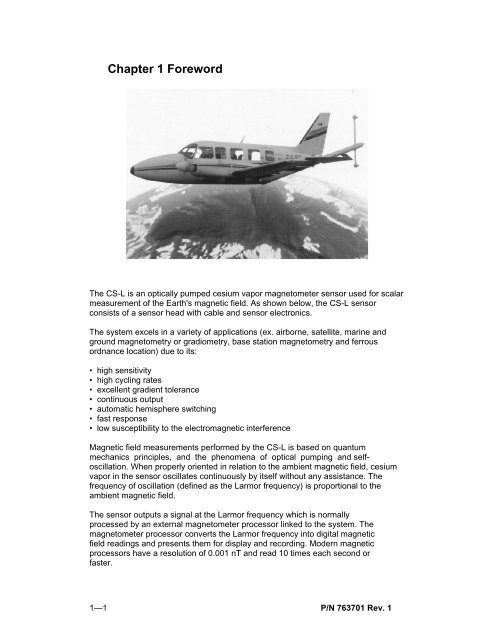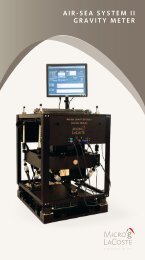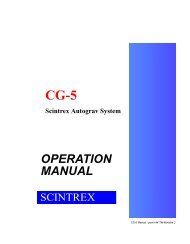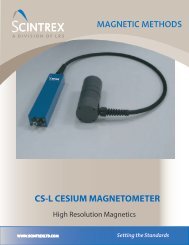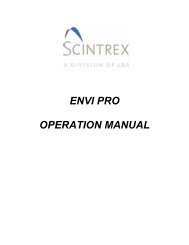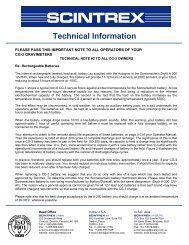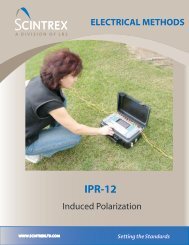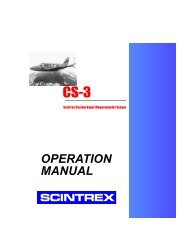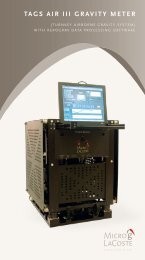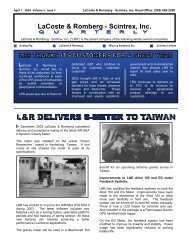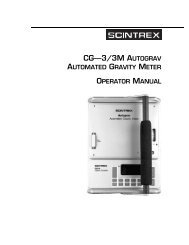CS-L Cesium Vapor Magnetometer Sensor OPERATION ... - Scintrex
CS-L Cesium Vapor Magnetometer Sensor OPERATION ... - Scintrex
CS-L Cesium Vapor Magnetometer Sensor OPERATION ... - Scintrex
You also want an ePaper? Increase the reach of your titles
YUMPU automatically turns print PDFs into web optimized ePapers that Google loves.
1—1<br />
Chapter 1 Foreword<br />
The <strong>CS</strong>-L is an optically pumped cesium vapor magnetometer sensor used for scalar<br />
measurement of the Earth's magnetic field. As shown below, the <strong>CS</strong>-L sensor<br />
consists of a sensor head with cable and sensor electronics.<br />
The system excels in a variety of applications (ex. airborne, satellite, marine and<br />
ground magnetometry or gradiometry, base station magnetometry and ferrous<br />
ordnance location) due to its:<br />
• high sensitivity<br />
• high cycling rates<br />
• excellent gradient tolerance<br />
• continuous output<br />
• automatic hemisphere switching<br />
• fast response<br />
• low susceptibility to the electromagnetic interference<br />
Magnetic field measurements performed by the <strong>CS</strong>-L is based on quantum<br />
mechanics principles, and the phenomena of optical pumping and selfoscillation.<br />
When properly oriented in relation to the ambient magnetic field, cesium<br />
vapor in the sensor oscillates continuously by itself without any assistance. The<br />
frequency of oscillation (defined as the Larmor frequency) is proportional to the<br />
ambient magnetic field.<br />
The sensor outputs a signal at the Larmor frequency which is normally<br />
processed by an external magnetometer processor linked to the system. The<br />
magnetometer processor converts the Larmor frequency into digital magnetic<br />
field readings and presents them for display and recording. Modern magnetic<br />
processors have a resolution of 0.001 nT and read 10 times each second or<br />
faster.<br />
P/N 763701 Rev. 1


